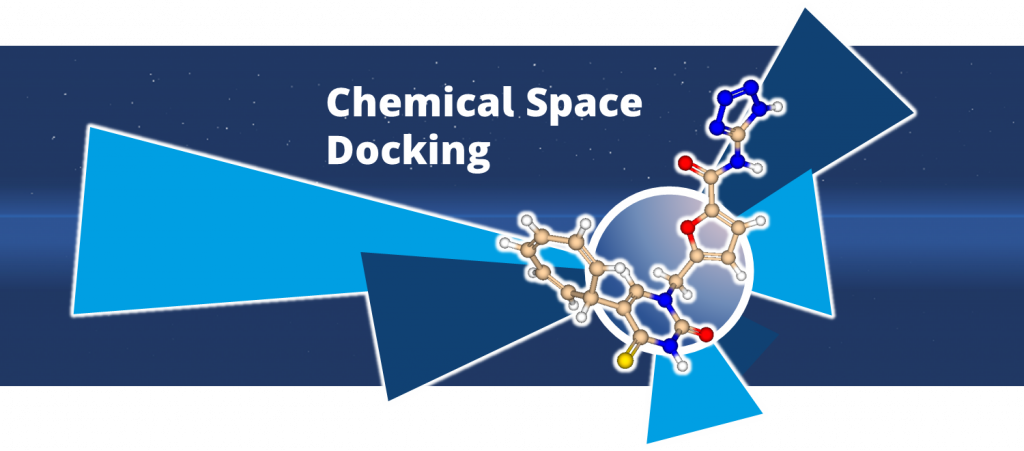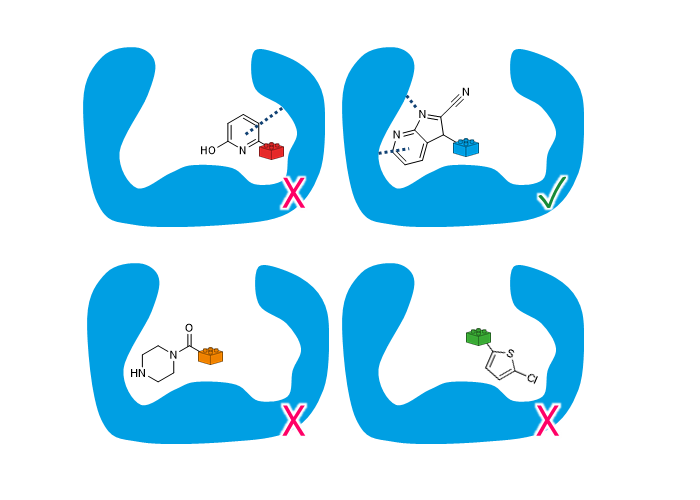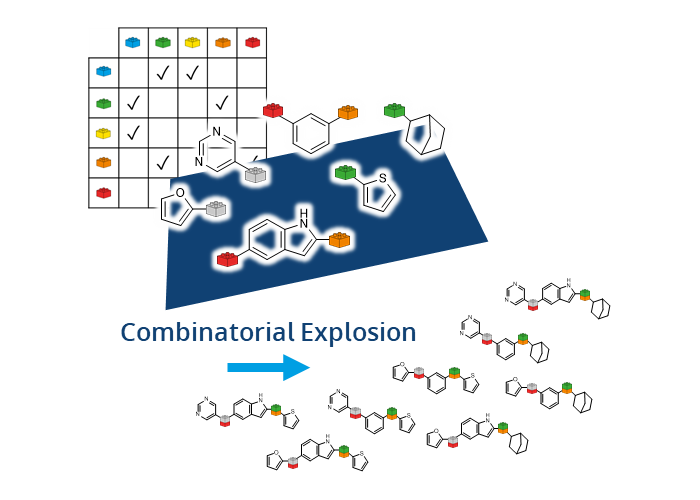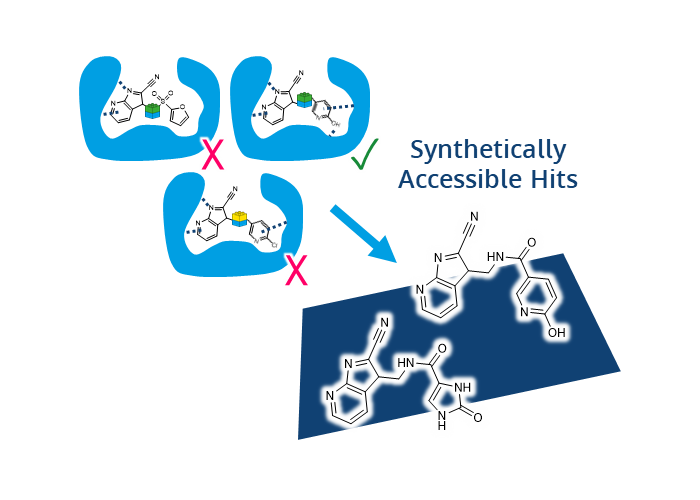After the re-docking of generated compounds, the final binding mode assessment & filtering step, our Chemical Space Docking service delivers a set of molecules that are likely to bind to the target of interest. Since chemical rules have been applied to create the Chemical Space (e.g.,
robust chemical reactions or in-house knowledge), hit candidates have a very high likelihood of synthetic accessibility.
Several pharmaceutical companies have already utilized the concept of combinatorial reaction chemistry
to create their own, proprietary Chemical Spaces. Renowned chemical compound makers have inhaled the power and possibilities behind this approach and responded with
their own Chemical Spaces: Users can search for commercially available, "make-on-demand" compounds. The application of robust in-house chemical reactions is reflected in a high synthetic success rate and with delivery rates of a few weeks.



